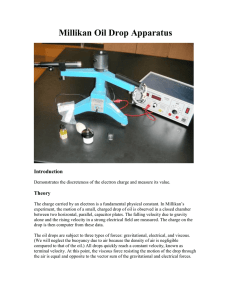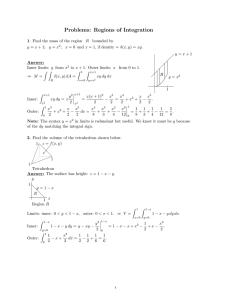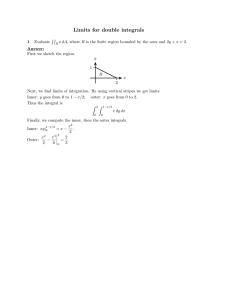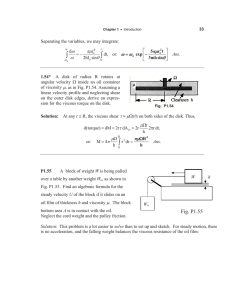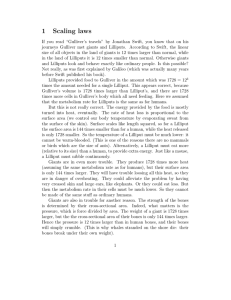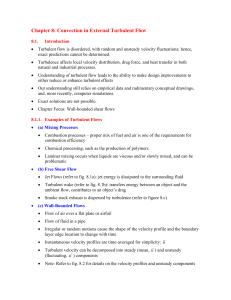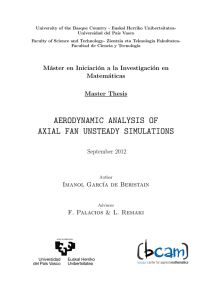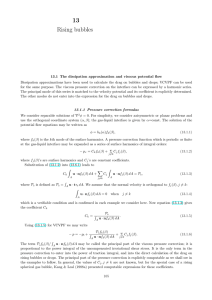δ δ δ δ δ δ δ δ
advertisement
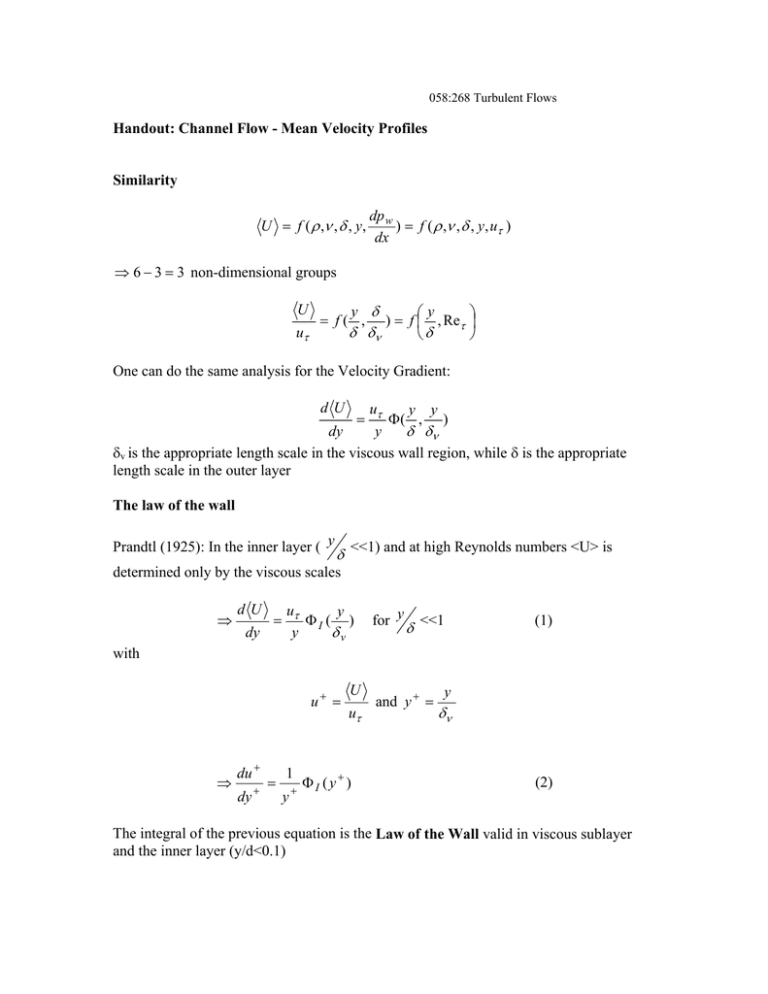
058:268 Turbulent Flows Handout: Channel Flow - Mean Velocity Profiles Similarity U = f ( ρ ,ν , δ , y, dp w ) = f ( ρ ,ν , δ , y, uτ ) dx ⇒ 6 − 3 = 3 non-dimensional groups U uτ y δ ⎛y ⎞ = f ( , ) = f ⎜ , Reτ ⎟ δ δν ⎝δ ⎠ One can do the same analysis for the Velocity Gradient: dU uτ y y Φ( , ) δ δν dy y δv is the appropriate length scale in the viscous wall region, while δ is the appropriate length scale in the outer layer = The law of the wall Prandtl (1925): In the inner layer ( y δ <<1) and at high Reynolds numbers <U> is determined only by the viscous scales ⇒ dU dy = uτ y ΦI ( ) δv y for y δ <<1 (1) with u+ = ⇒ du + dy + = 1 y + U uτ ΦI (y+ ) and y + = y δν (2) The integral of the previous equation is the Law of the Wall valid in viscous sublayer and the inner layer (y/d<0.1) u+ = fw(y+ ) (3) where + y+ fw(y ) = ∫ 0 1 y +' Φ I ( y + ' )dy + ' Viscous Sublayer From equation (3) fw = u+ = U uτ ⇒ f w (0) = 0 du + f w' (0) = dy + = y =0 δν ∂ U uτ ∂y | y =0 = ν τw uτ2 ρν = ρ τw =1 τw ρ Hence, the Taylor series expansion for small y+ u + = f w ( y + ) = f w (0) + f w' (0) y + + O ( y +2 ) ⇒ u+ = y+ The Log Law At large Reynolds numbers, the outer part of the inner layer corresponds to large y+ y where viscosity has little effect ( Φ independent of ) δν Φ = Φ( y + >> 1 ⇒ ⇒ Also Φ independent of y δ y δ >> y δν y y , ) δν δ = y δ δ δv >> 1 δv v = = Reτ−1 δ uτ δ for y δ ⇒ << 1 let ' s say y δν δν δ y δ < 0.1 < 0.1 ⇒ y + < 0.1 δu δ = 0.1 τ = 0.1 Reτ δν ν where the edge of the inner layer was defined at 0.1δ. So if Reτ is such that y δ >> Reτ−1 and y + = y / δ v < 0.1 Reτ Φ I ( y + ) independent of both y y δν (viscosity) and of δ , thus from equation (2): ⇒ Φ I = const = ⇒ du + dy + = ⇒ u+ = 1 κ 1 κy + 1 κ ln y + + B with κ = 0.41 (Von Karman constant) B=5.2 Velocity Defect Law In the outer layer ( y + > 50 ) the assumption that Φ is independent of ν implies that, for large y , Φ tends asymptotically to a function of y/δ only: δν dU = dy uτ y Φo ( ) y δ (4) By integrating in y from y to δ (channel centerline) δ ∫ y Uo − U uτ dU dy ' y = FD ( ) with δ δ dy ' = ∫ y uτ y ' Φo( y' δ )dy ' 1 1 y FD ( ) = ∫ ' Φo( y ' )dy ' δ y y (5) δ Unlike the law of the wall function f w ( y + ) which is universal, the function FD ( ) is δ different in different flows. y At sufficiently high Reynolds numbers (approximately Re>20,000) there is an overlap region between the inner layer and the outer layer (see Figs. 7.8 and 7.13). In this region both equations (1) and (4) are valid ⎛ y y dU = Φ I ⎜⎜ uτ dy ⎝ δv ⎞ y ⎟⎟ = Φ 0 ⎛⎜ ⎞⎟ for δ v << y << δ ⎝δ ⎠ ⎠ This can be satisfied only if the two functions on the right hand side are equal to the same constant (1/κ), which leads to dU u ⇒ = τ for δ v << y << δ dy yκ For small y/δ, the velocity defect law (equation 5) can be written as: U0 − U uτ 1 y ⎛ y⎞ = FD ⎜ ⎟ = − ln + B1 κ δ ⎝δ ⎠ (6) The value of the flow-dependent constant B1 is ~0.2 based on DNS and ~0.7 based on experimental data for channel flows. Statistics in turbulent channel flows:

